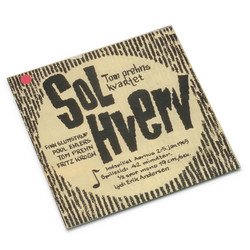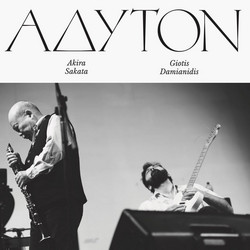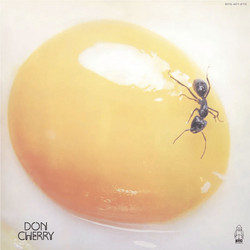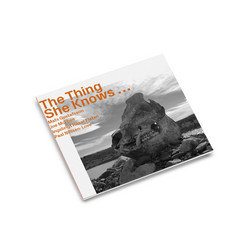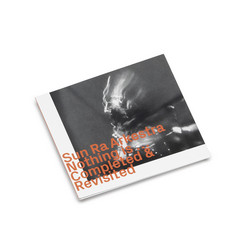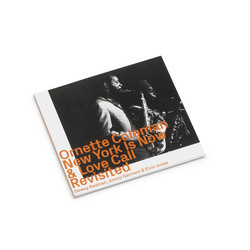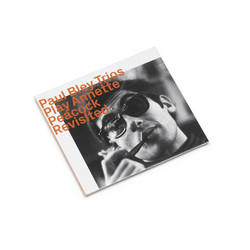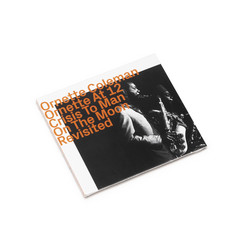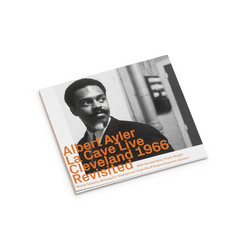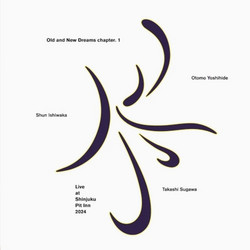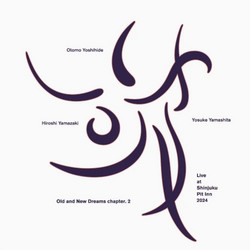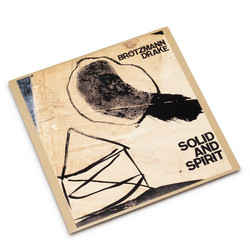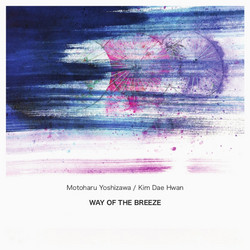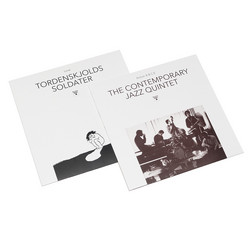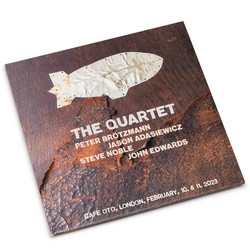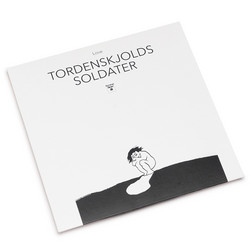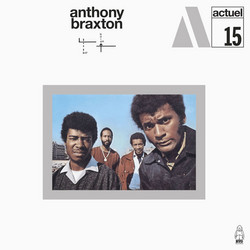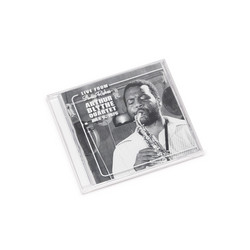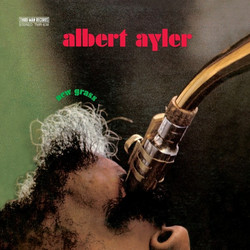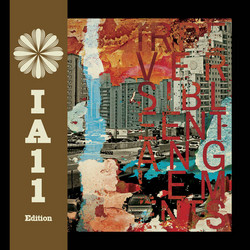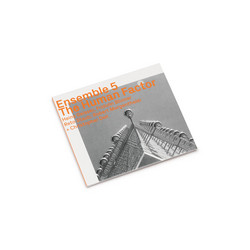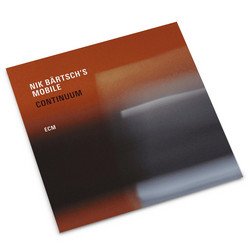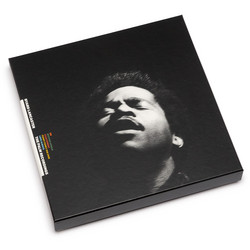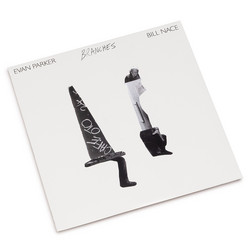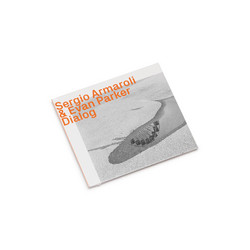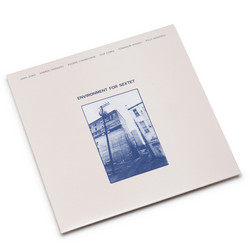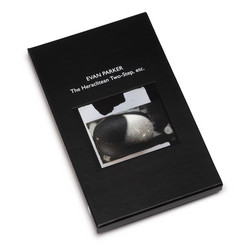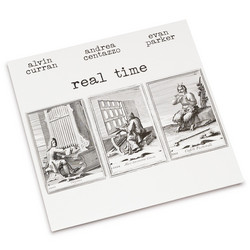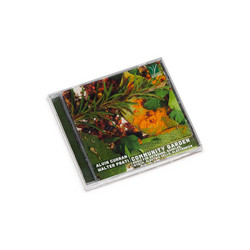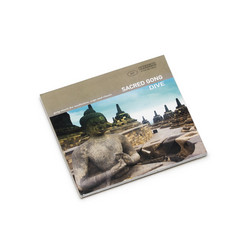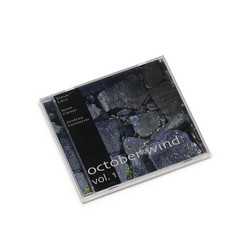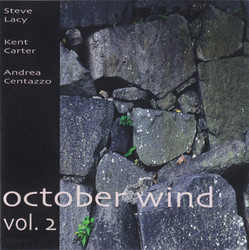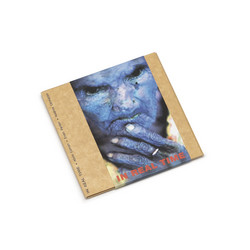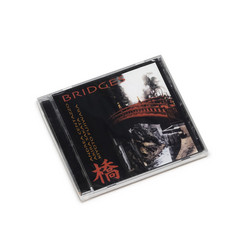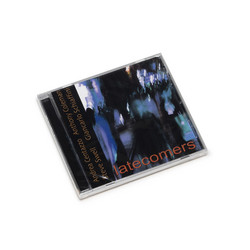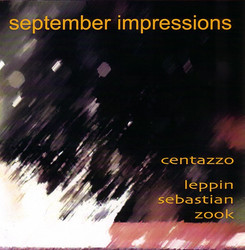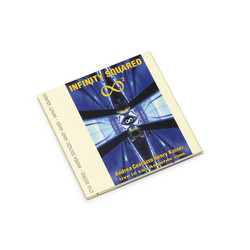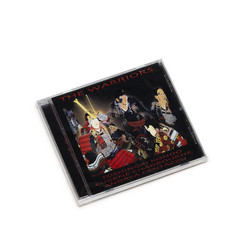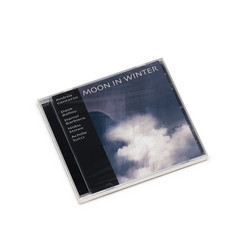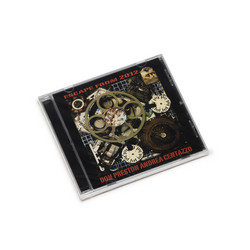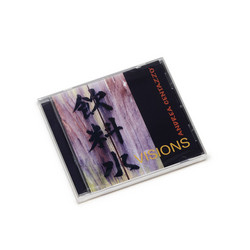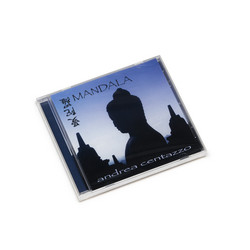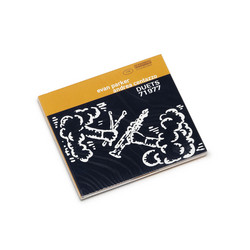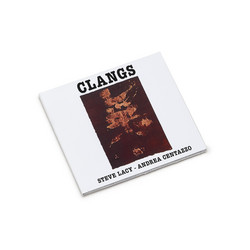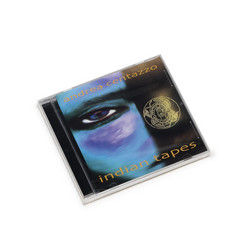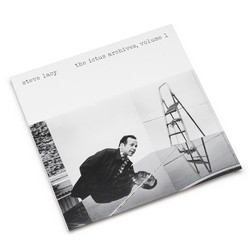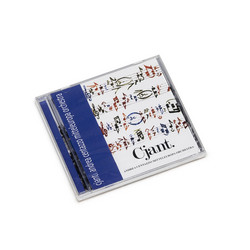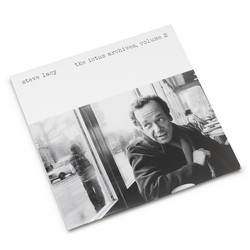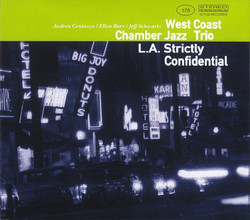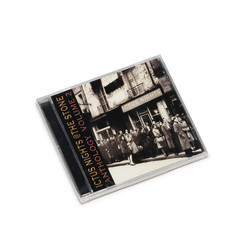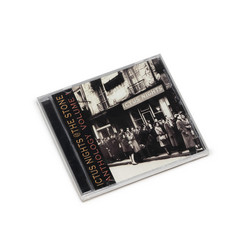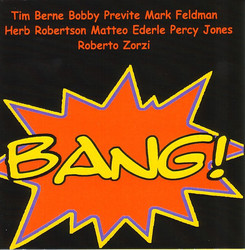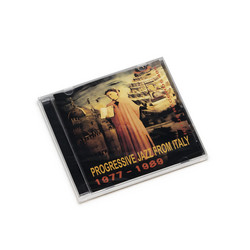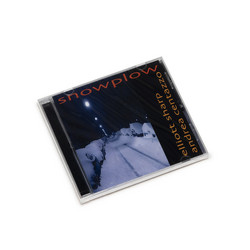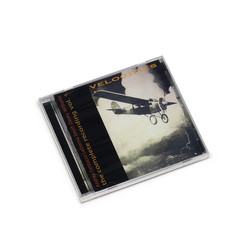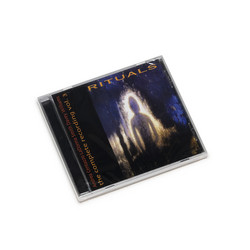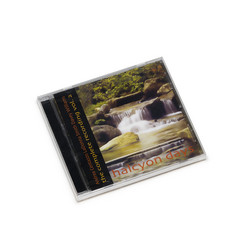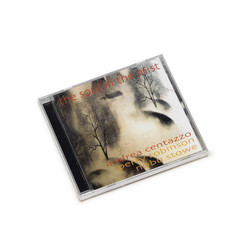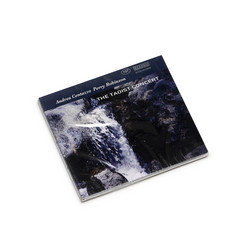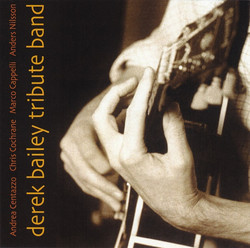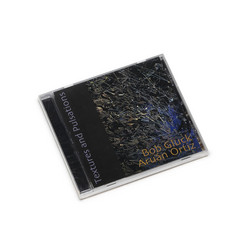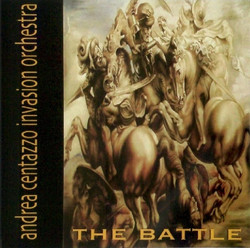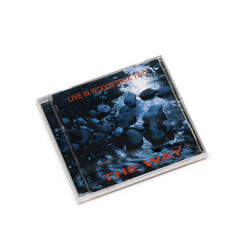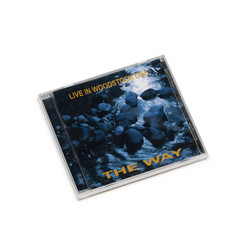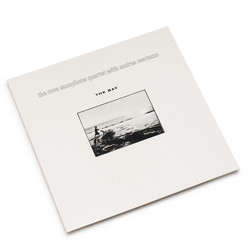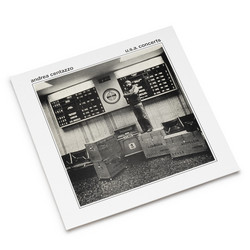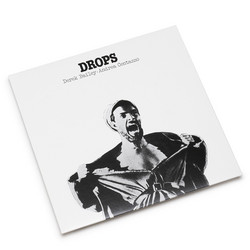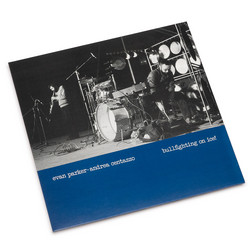Alvin Curran, Evan Parker, Andrea Centazzo
Real Time I, II, Bullfighting on Ice (3 LP Bundle)
Special discounted bundle (with additional and exclusive dedicated Tote Bag. Since their founding, the Italian imprint Ictus, has stood at the vanguard of forward-thinking sound, building a carefully curated catalog of releases that collectively build context and conversation across numerous avenues of exploration—contemporary and historical, sitting side by side—within the wider field of experimental and improvised music. Every step of the way, they’ve seemed to step up the game. Started in 2021, the Reissue Series of the legendary free jazz imprint, Ictus Records, founded by the percussionist and composer, Andrea Centazzo in 1976, and reissued four of the label’s most celebrated releases: Steve Lacy and Andrea Centazzo’s “Clangs”, Derek Bailey and Andrea Centazzo’s “Drops”, Steve Lacy, Andrea Centazzo, and Kent Carter’s “Trio Live”, and John Zorn, Andrea Centazzo, Eugene Chadbourne, Tom Cora, Toshinori Kondo, and Polly Bradfield’s “Environment for Sextet”. This was followed in 2023 with four more killer drops: Andrea Centazzo’s “U.S.A. Concerts”, The Rova Saxophone Quartet’s “The Bay”, and Steve Lacy’s “The Ictus Archives Vol. 1” and “Vol. 2”. We’ve been waiting on baited breath to see what comes next, and now finally they’re back with another back of three gems from the label’s back catalog and archives: Evan Parker & Andrea Centazzo's "Bullfighting On Ice", and Alvin Curran, Evan Parker, & Andrea Centazzo's “Real Time” and “Real Time Two”. Capturing a series of live performances during December of 1977, between these luminaries of improvised music - each springing from distinct and markedly different contexts within the idiom—each overflows with astounding, real-time creativity, resulting in some of the most thrilling arrangements of sound we can call to mind. Issued in highly limited, fully remastered vinyl editions, this is some serious fire that can’t be overlooked and stands among the most important and rare documents of the free improvisation from the 1970s.
Evan Parker / Andrea Centazzo - “Bullfighting on Ice!”
A rare, globally minded Italian initiative within the context of free improvisation during its years of activity, the imprint, Ictus, was founded in 1976 by percussionist and composer Andrea Centazzo, and his wife Carla Lugli. Running for just under a decade, until relaunching during the mid-2000s, the label produced a couple of dozen highly highly celebrated releases by some of the most noteworthy figures within the context of free jazz and beyond. While recorded during the early years of the label’s activities, “Bullfighting on” Ice!”—comprising an astounding live duo performance between the seminal English saxophonist, Evan Parker, and percussionist, Andrea Centazzo—which is the first in latest batch dedicated to Ictus - has, until now, remained unreleased on vinyl. Capturing a hugely important moment in the career of the saxophonist Evan Parker - one of the great luminaries of British free improvisation - falling directly between the release of his seminal LPs, “Saxophone Solos” (Incus, 1976) and Monoceros (Incus, 1978), the material comprising “Bullfighting on Ice!” belongs to multiple narratives and lines of creativity. Recorded live in Padova, on December 12, 1977, Parker and Andrea Centazzo’s collaboration had begin a handful or months before, in July, when the saxophonist had come to Italy with Derek Bailey for a series of concerts, after which he joined Centazzo in the Tuscan countryside where he lived, to embark upon a series of studio recording together (not released until 2016, when a CD release, "Duets 71977”, gathered the, alongside the live material that makes up this LP).
Returning to Italy the flowing December, Parker and Centazzo embarked upon a series of duo performances, as well as trio performances that built upon work as a trio with Alvin Curran begun during the preceding summer at the nearby Centro d'Arte in Padova - renowned for an autonomous jazz series, launched in 1973, that hosted artists including Art Ensemble of Chicago, Sam Rivers, Anthony Braxton, and many other members of the then-emerging European free jazz scene., staged in a circus tent located by an old slaughterhouse. While a hugely important document from the evolutions of free improvisation during this period, “Bullfighting on Ice!” also unlocks access to little-remembered aspects of the complicit social and political moment within which it was made. In 1977, Italy, and especially Padova, found itself in a heightened, turbulent political period. Radical leftist ideas had developed into clashes with police and the establishment, resulting in a near-total ban on rock concerts—seen as a focal point of the counterculture—across the country, consequently drawing young audiences toward other radical forms of music: notably free jazz. It was within these tense and meaningful circumstances that Parker and Centazzo unfurled their blistering and groundbreaking sounds in front of an uncharacteristically large audience for this form of music.
Encountering Parker at the height of his powers, deploying his signature plastic reeds to deliver sharp articulations in conjunction with his unique deployment of circular breathing—eluding to much of what was to come over the ensuing years—with Centazzo delivering complex polyrhythms from behind his custom-built, expanded drum kit, including his own designed cymbals and gongs, as well as interventions on lo-fi sound toys (the laughing bag ), a range of electronic sound objects, including '’the 'crackle box’ (given to him by Steve Lacy), and the use of the Synare, one of the first percussion synthesizers ever produced.
In front of a freewheeling audience under the tent, where people wandered, sat, and stood, drinking and smoking in revelry—captured in momentary ambiences by the recording—across the length of “Bullfighting on” Ice!”—culled from the best moments of playing on that day - Parker and Centazzo unfurl an astounding sense of energy across six, real-time compositions: an absolute force of texture, tone, timbral ferocity, made by the incredible depth of sensitivity between the two players that defines the more restrained, delicate moments as much as the fiery blasts that largely define the concert.
Alvin Curran / Andrea Centazzo / Evan Parker - “Real Time” and “Real Time Two”
During the same period that Evan Parker and Andrea Centazzo entered the studio to record the material that would eventually be released as "Duets 71977”, the pair also embarked upon an unexpected trio with the seminal American, Italy-based composer, performer, improviser, sound artist, and writer, Alvin Curran, opening up a broader approach to sound practice that extended explicitly beyond the world of free jazz, and built a tangible bridge with more explicitly experimental music.
With a career now spanning more than half a century, Curran stands among the most important figures in contemporary historical experimental music. Widely celebrated for his long-standing efforts within Musica Elettronica Viva—the collective that he helped found in 1966 with Frederic Rzewski and Richard Teitelbaum—his gestures as a solo performer and composer have arguably yielded even greater levels of influence and change, beginning with a series of groundbreaking LPs that began to emerge during the mid-1970s. “Real Time” and “Real Time Two”, the two LPs worth of material recorded with Andrea Centazzo and Evan Parker in 1977, fall solidly between two of the most striking of these, 1975’s “Canti E Vedute Del Giardino Magnetico” and 1978’s “Fiori Chiari, Fiori Oscuri “, revealing a rarely encountered document of his work as a collaborative improviser outside of MEV during this crucial period.
“Real Time,” originally released on LP by Ictus in 1978, captures this extraordinary trio live in concert in Rome on December 13, 1977, and features Centazzo on percussion and percussion synthesizer; Curran on synthesizer, piano, and trumpet, and Parker soprano & tenor saxophones. Reflecting back upon the event, Centazzo recalls: “Real time is an extraordinary example of interaction between musicians coming from different worlds of new music. I had the chance to perform with those two great musicians on other occasions: in duo with Curran and in a duo, trio and sextet with Parker. Alvin came from the American school, full of minimalist references, melodic structures, and open to all kinds of contamination. Evan had left jazz to accomplish his own instrumental language, aiming at total improvisation. The idea of getting them to put together a trio that would perform several concerts and recordings was one of the most exciting moments of my career. Our three languages found a common ground of expression where different musical backgrounds came together and created a unique blend for that period of time.”
Comprising a single, long-form improvised composition across its first side and three shorter pieces across the second, when contrasted with “Bullfighting on Ice!”, Curran’s presence becomes immediately palpable and felt. While not without the furious fire that defined Centazzo and Parker’s - Curran delivers some wild, seething moments on both piano and trumpet; there’s considerably greater attention offered to delicate timbral and textural interplay and a slowly unfolding sense of rhythmical momentum. More simply put, these pieces, albeit incredibly tense and complex, feel more connected to tinier and more discreet interplays of intimate sounds, picking up momentum toward a furious, clattering, and squawking roar before diving toward pointillistic whispers in space.
This stands in stark contrast to the first side of “Real Time Two”, capturing Centazzo, Parker, and Curran on the same instruments on following day - December 14, 1977 - live in concert at Teatro Comunale in Pistoia, which remained unissued for more than 20 years, until 1998, when Ictus released it as CD. This Ictus edition marks its first ever vinyl release.
Comprising two, long-form improvisations, the first side of “Real Time Two” unfurls as a full-throttle storm from the outset, with each player pushing themselves to the max. Beginning with a passage, Parker’s weaving a tapestry of solo saxophone squeals, squeaks, and squawks, before being met by staggered interventions by Centazzo behind the kit, Curran’s entrance on trumpet provokes a seething landscape of high-energy sound, met and responded to with profound dexterity by his two comrades as he shifts first to synth and then to piano as the trio reaches truly remarkable heights. Further proving their versatility and range, the second side of “Real Time Two” couldn’t be more different than the first. Roughly the first half is fleshed out by a truly singular duet between Parker’s saxophone and Curran’s delivery of tense, high-pitched electronic tones, before brief penetration of Centazzo’s rolling percussion begins to force them into other realms. From roughly the midway mark, the trio moves into a slowly unfolding free dirge that’s guided by spiritual jazz-infused lines by Parker, gently met by Curran’s delicate pulse on piano and Centazzo’s gathering momentum on the drums that eventually drives both players into a rollicking state, Curran moving from minimalist receptions into more complex tonal arrangements and Parker unleashing with everything he has.
Unquestionably one of the most unique, accomplished, and startlingly singular trios to be captured in a rare collaboration during the 1970’s - versatile, complex, thrilling, and overflowing with energy, both “Real Time” and “Real Time Two” should be regarded as towering grails in Centazzo, Parker, and Curran’s catalogs of recordings, as well as within the canon of free improvised music at large. Ictuss’ very limited editions make the first-ever vinyl reissue of “Real Time” since the original 1978 pressing and the first-ever vinyl release of its companion “Real Time Two”. Both are truly essential. It’s impossible to sing the praises enough. They’ve totally taken us off guard and blown our minds.
